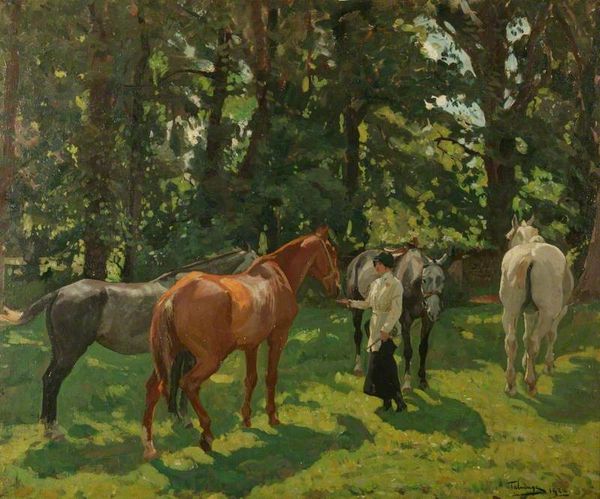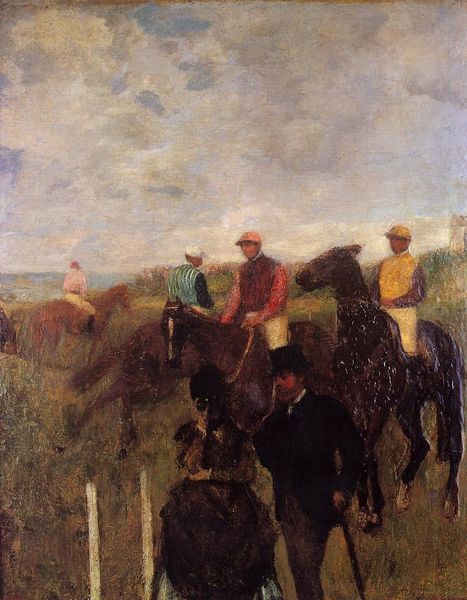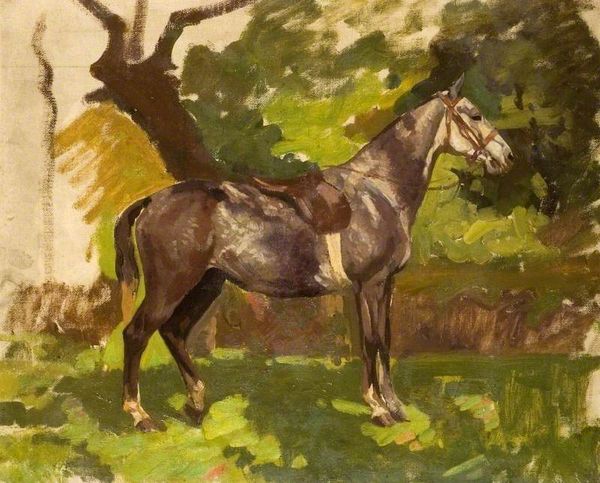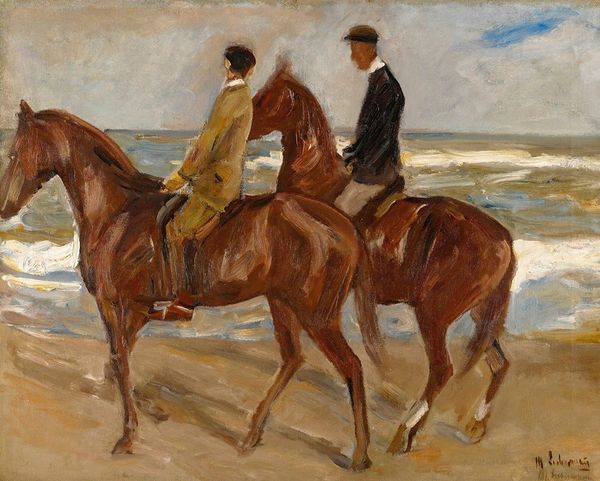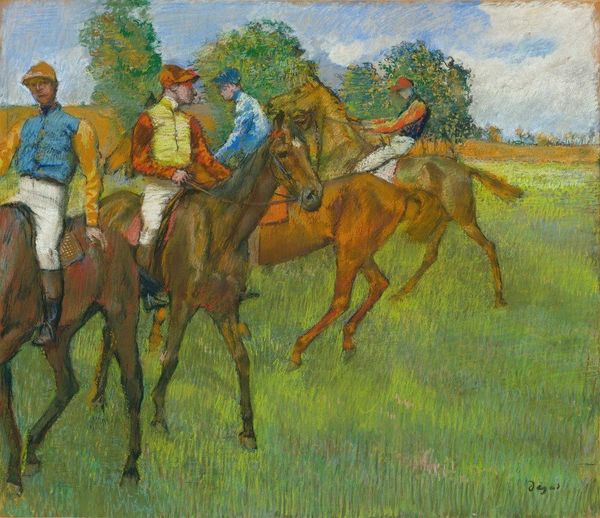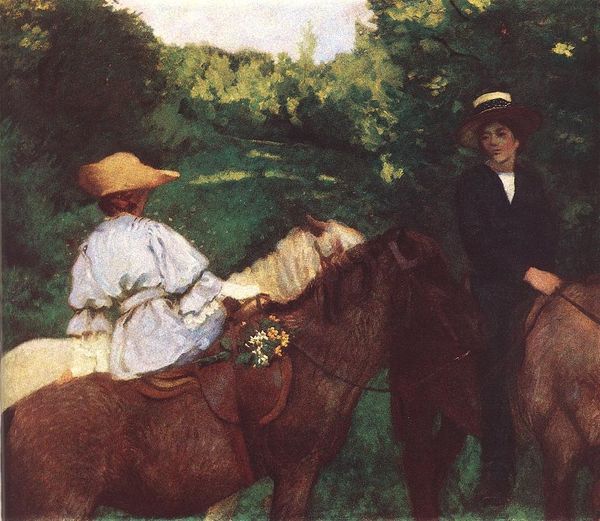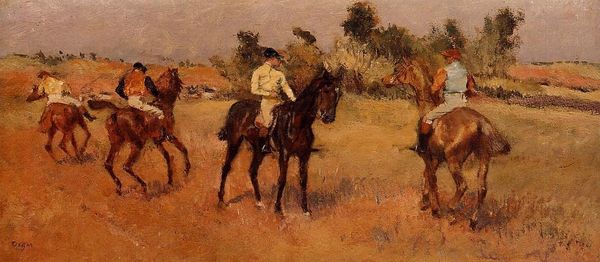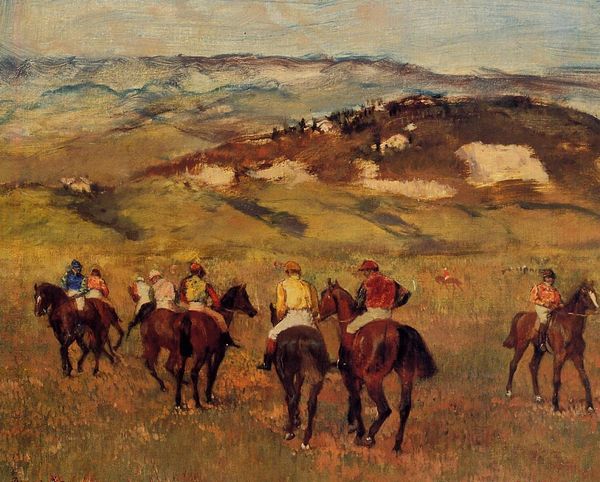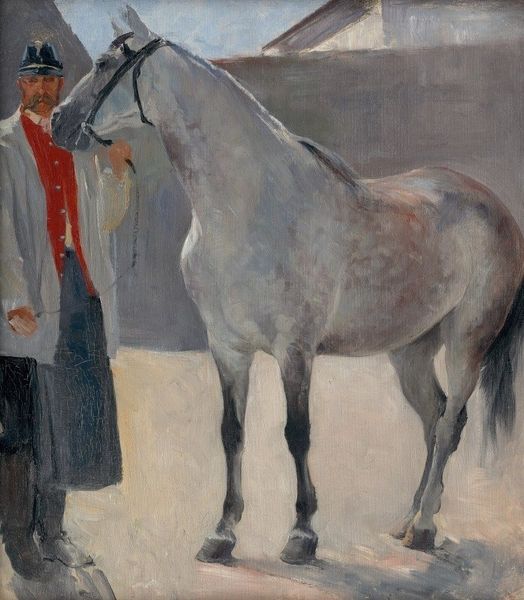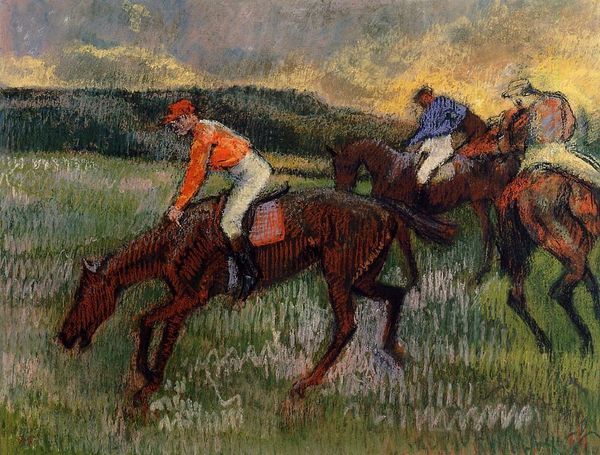
Copyright: Public domain
Curator: Algernon Talmage painted "The Birthday Present" in 1923. Executed with oil paint using a plein-air technique, it beautifully captures an outdoor scene, almost like a snapshot from a bygone era. Editor: The first thing that strikes me is the light – the way it dapples across the grass and the horse's coat, imbuing everything with this very dreamy quality. It feels incredibly idyllic, but I wonder about the subjects and the power dynamics at play. Curator: Yes, there is an overt feeling of being a product of its time in a moment of post-war upper-class British society, we are seeing both gender and class demonstrated through visual markers such as their fashion, equestrianism and the countryside estate setting. How might the woman's position on horseback influence this reading? Editor: Well, riding itself can symbolize authority and status, tracing back to depictions of conquerors and royalty. Here, the woman is elevated, quite literally, above the others. Perhaps her white clothing is intended as some marker of purity, but there are darker histories that come to my mind surrounding the use of white fabrics as symbols. It has to be questioned, I think, especially if this work alludes to ideas surrounding "purity". Curator: And that directly connects with the idea of privilege – who gets to embody that image of idealized virtue and leisure. The setting itself is imbued with the imagery of country estates and rural ideals—a lifestyle completely inaccessible to the working classes. The entire scene almost seems staged, too deliberate. Editor: I am curious about the horse too – it is a prominent figure with a saddle. Horses have always represented power and status. There seems a contrast here – in colour – between the lighter horse and the darker clothes of those on foot. This contrast has symbolic and narrative functions for status but maybe speaks to a collective psyche with certain archetypes? Curator: You make an astute point. By situating this painting within its social and historical landscape, it makes one consider the hidden power structures that underpinned such seemingly innocuous scenes of leisure. There's a clear interplay here between nature, class, gender and tradition – aspects which were crucial in understanding British culture. Editor: Precisely, it makes us question what narratives are being subtly reinforced here through the symbols and visual cues within the composition itself. Seeing what continuities of culture are presented or challenged?
Comments
No comments
Be the first to comment and join the conversation on the ultimate creative platform.
